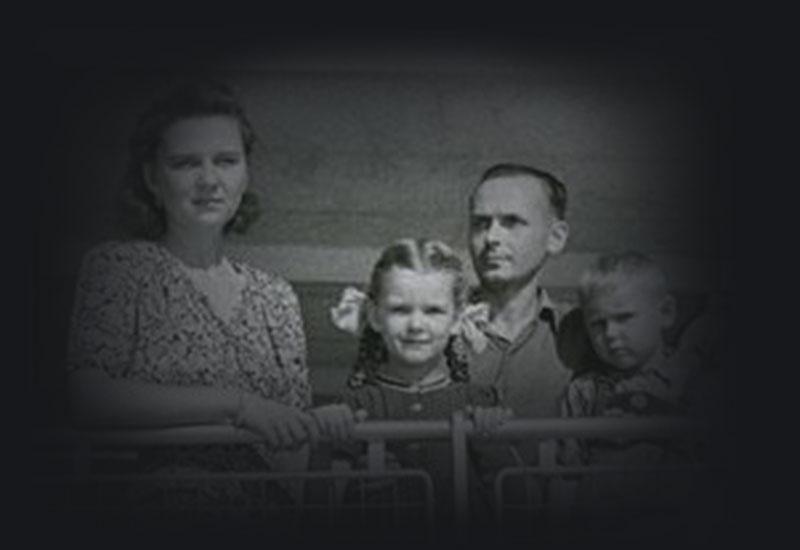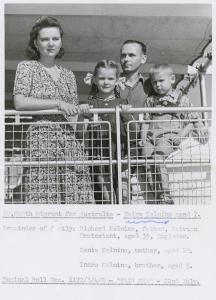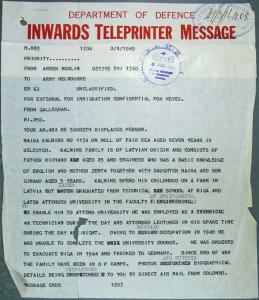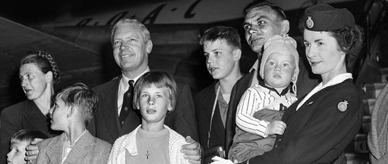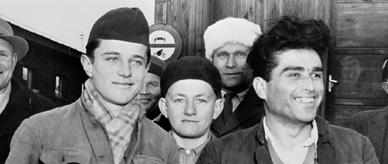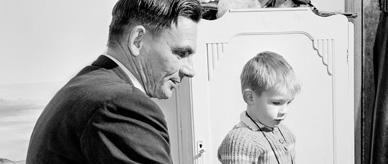Seven-year-old Maira Kalnins (who is referred to incorrectly as ‘Naira’ within the records) became the face of the Displaced Persons Program in Australia in 1949.
Maira was travelling with her family to start a new life in Australia after the postwar occupation of her native Latvia by Russian forces. Her photogenic qualities won her the role as the central figure in a publicity campaign to mark the 50,000th new arrival in Australia under the Displaced Persons Program.
In August 1949, Immigration Minister Arthur Calwell flew to Fremantle to greet the Kalnins. Records held by the National Archives show the level of planning that went into organising the publicity campaign. This includes the passenger ship Fairsea’s unscheduled stop in Fremantle, and parliamentary outrage at the cost of the trip. A newspaper at the time estimated that the Minister’s trip cost in excess of £1000, including £400 for keeping the Fairsea at sea for an extra day and £200 to feed passengers.

